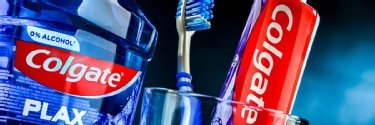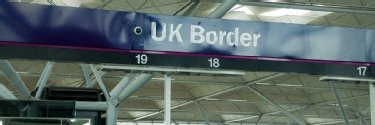News
-
 07 January 2026
07 January 2026
India and Singapore outpace global peers in agentic AI adoption
-
 07 January 2026
07 January 2026
Interview: Diana Schildhouse, chief data and analytics officer, Colgate-Palmolive
-
 07 January 2026
07 January 2026
CCRC says multiple Post Office software systems potentially implicated in miscarriages of justice
-
 07 January 2026
07 January 2026
Home Office digital-only eVisa system could be ruled unlawful
News Archive
-
January 07, 2026
07
Jan'26
Accenture acquires UK AI firm linked to Vote Leave campaign
Faculty, the company that powered the data strategy of Boris Johnson’s former chief of staff, Dominic Cummings, is now part of Accenture
-
January 06, 2026
06
Jan'26
Lenovo taps AI and digital twins to power World Cup 2026
The technology partner for upcoming football tournament has built an AI knowledge assistant for coaches, digital avatars to assist VAR decisions, and smart infrastructure for venue management
-
January 06, 2026
06
Jan'26
Privacy will be under unprecedented attack in 2026
The UK and Europe are ramping up opposition to encryption and stepping up surveillance of private communications. Here is what to expect this year
-
January 06, 2026
06
Jan'26
Fujitsu UK job cuts as staff pay the price for failures of top executives
Troubled IT giant’s staff are paying the price for senior management failures over Post Office scandal
-
January 06, 2026
06
Jan'26
UAE launches AI ecosystem to boost climate-resilient agriculture worldwide
In partnership with the Gates Foundation, Abu Dhabi unveils a multi-institution AI platform designed to accelerate agricultural innovation, strengthen food security and support millions of smallholder farmers facing climate volatility
-
January 06, 2026
06
Jan'26
The networks that will turn potential into profit in 2026
What’s ahead in networking over the course of the next 12 months? It will be less a case of a rush to tech, but rather a move from what is possible to what business benefits can be unlocked
-
January 06, 2026
06
Jan'26
Fujitsu Post Office IT support team were ‘legalised hackers’
Backdoors meant it was possible for Fujitsu staff to steal money from Post Office branches, says former Fujitsu tech worker
-
January 06, 2026
06
Jan'26
S/4Hana in 2026: Three ways to move off SAP ECC
We speak to three companies that have taken very different approaches to migrate off SAP Enterprise Core Components onto S/4Hana
-
January 06, 2026
06
Jan'26
Fujitsu boss has been a Post Office scandal bystander for over a decade
IT supplier’s European boss was kept up to date with challenges to the Horizon system, but like others, remained silent
-
January 06, 2026
06
Jan'26
Nvidia unveils Vera Rubin architecture to power AI agents
The AI chip giant has taken the wraps off its latest compute platform designed for test-time scaling and reasoning models, alongside a slew of open source models for robotics and autonomous driving
-
January 05, 2026
05
Jan'26
UK government to spend £210m on public sector cyber resilience
The UK government unveils a £120m Cyber Action Plan to help reinforce and promote IT security resilience across the country's public services
-
January 05, 2026
05
Jan'26
How Bahrain is building a region-leading digital economy
From hyperscale cloud and fintech regulation to AI skills and smart manufacturing, Bahrain is positioning technology at the heart of its economic diversification strategy, says Bahrain EDB’s Musab Abdullah
-
January 05, 2026
05
Jan'26
What will the Post Office scandal bring in 2026?
Campaigners are waiting to see what will unfold in the Post Office scandal in 2026, but history has told them not to hold their breath
-
January 05, 2026
05
Jan'26
Falcon and beyond: Abu Dhabi’s blueprint for national AI governance
Through national frameworks, open-source innovation and homegrown models such as Falcon, Abu Dhabi is shaping a distinctive approach to AI governance and deployment
-
January 05, 2026
05
Jan'26
Global cloud infrastructure spending hits $102.6bn in Q3 2025
The cloud infrastructure market grew 25% year on year, driven by enterprises moving from AI experimentation to scaled deployment, according to research from Omdia
-
January 05, 2026
05
Jan'26
Singtel trials 50Gbps fibre to support future AI and cloud workloads
Singtel kicks off technical pilot for ultra-high-speed broadband, targeting the bandwidth requirements of immersive media, remote enterprise workflows and AI-driven systems
-
January 02, 2026
02
Jan'26
ServiceNow predicts more than one million new AI-driven jobs in UAE by 2030
Enterprise AI adoption, national strategy and large-scale digital transformation programmes are set to reshape the UAE labour market and technology landscape, according to ServiceNow research
-
December 31, 2025
31
Dec'25
Top 10 police technology stories of 2025
Here are Computer Weekly’s top 10 police technology stories of 2025
-
December 31, 2025
31
Dec'25
Top 10 surveillance, journalism and encryption stories of 2025
A transatlantic row between the UK and the Trump administration erupted after the UK attempted to force Apple to break its advanced encryption. That was just one of a series of stories reporting on the tension between state surveillance and privacy ...
-
December 31, 2025
31
Dec'25
Top 10 women in tech and diversity in tech stories of 2025
As the year draws to a close, Computer Weekly looks over some of the notable stories relating to women in tech, diversity and inclusion over the past 12 months
-
December 31, 2025
31
Dec'25
Top 10 business applications stories of 2025
There is no doubt what took centre stage in the theatre of business applications in 25: agentic AI, surpassing pre-2022 AI, and generative AI. C-level executives bang the AI drum while enterprises find value
-
December 30, 2025
30
Dec'25
Oldest victim of Post Office scandal awarded OBE in New Year Honours 2026
The New Year Honours List 2026 conferred an OBE on the oldest living victim of the Post Office scandal, as well as hailing members of the UK technology community
-
December 30, 2025
30
Dec'25
PwC: AI, cloud and next-generation networks redefine the Middle East’s TMT future
From sovereign cloud and AI compute to gaming and quantum, PwC research shows how the region is reshaping growth, competitiveness and digital sovereignty
-
December 30, 2025
30
Dec'25
Top 10 IT careers and skills stories of 2025
Looking back at the skills and hiring landscape in 2025, Computer Weekly shares key moments for IT careers and skills over the past 12 months
-
December 30, 2025
30
Dec'25
Top 10 information management stories of 2025
Artificial intelligence continued to have a big impact on information management in 2025. Also selected are case studies and interviews with data chiefs that show the enduring value of good data management
-
December 30, 2025
30
Dec'25
Top 10 government IT stories of 2025
The past 12 months has seen a number of significant milestones in digital government. Here are Computer Weekly’s top 10 government IT stories of 2025
-
December 30, 2025
30
Dec'25
Top 10 technology ethics stories of 2025
Here are Computer Weekly’s top 10 tech ethics stories of 2025
-
December 30, 2025
30
Dec'25
Top 10 European IT stories of 2025
Here are Computer Weekly’s top 10 European technology stories of 2025
-
December 29, 2025
29
Dec'25
Top 10 Post Office scandal stories of 2025
Here are Computer Weekly’s top 10 Post Office scandal stories of 2025
-
December 29, 2025
29
Dec'25
Top 10 cyber security stories of 2025
AI dominated all tech conversations this year, but the concerns of cyber security professionals extend far beyond. From remote work to supply chains, quantum to identity, there were plenty of other topics for the industry to chew over in 2025.
-
December 29, 2025
29
Dec'25
Top 10 NHS IT stories of 2025
A new digital strategy, funding boosts and struggles to keep the lights on: here are Computer Weekly’s top NHS IT stories in 2025
-
December 28, 2025
28
Dec'25
Middle East tech trends 2026: AI, cyber security and sovereign infrastructure take centre stage
As artificial intelligence moves from experimentation to production and cyber threats escalate, the Middle East is entering a decisive phase of digital transformation, says Omdia chief analyst Trevor Clarke
-
December 24, 2025
24
Dec'25
Top 10 India stories of 2025
From infrastructure expansion and sovereign AI innovation to regulatory maturity, Computer Weekly recaps the key developments that kept CIOs and technology suppliers across India busy in 2025
-
December 24, 2025
24
Dec'25
Top 10 networking stories of 2025
As enterprises become more extended, dealing with network complexity has become almost as important as network performance. The key to this is AI – but only if properly deployed. Discover more in Computer Weekly’s top 10 networking stories of 2025
-
December 24, 2025
24
Dec'25
Top 10 cyber crime stories of 2025
In many regards, 2025 proved to be a relatively normal year for the cyber security world as threat actors and security pros continued their long-running cat-and-mouse game, but it was also a stand-out year that saw some of the largest cyber attacks ...
-
December 24, 2025
24
Dec'25
Top 10 AI stories of 2025
No topic took over 2025 like that of artificial intelligence – whether it was DeepSeek, the discussion around computational resources, low return on investment, or the hype surrounding agentic AI. Here are Computer Weekly’s top 10 AI stories of 2025
-
December 23, 2025
23
Dec'25
UK government further expands rural 4G coverage through SRN
Over 100 mobile masts have been upgraded across rural Wales, Scotland and England, delivering 4G coverage from all mobile network operators for the first time as part of an ongoing development scheme
-
December 23, 2025
23
Dec'25
Aftermarket car telematics arena drives past 90 million subscriptions
Study of aftermarket car telematics finds growing value in technology for application areas including stolen vehicle tracking and recovery, vehicle diagnostics, Wi-Fi hotspots, convenience applications and usage-based insurance
-
December 23, 2025
23
Dec'25
Sama X to commence operations in Jordan with Starlink services
Regional tech venture aims to bridge connectivity gaps in industry, education, enterprise, government and humanitarian sectors in the Middle East and North Africa with regional roll-out
-
December 23, 2025
23
Dec'25
UAE and Dubai’s tech ambitions in focus as Sheikh Hamdan meets Elon Musk
High-level talks highlight AI, space, digital infrastructure and the UAE’s push to become a global technology and innovation hub through partnerships and progressive regulation
-
December 23, 2025
23
Dec'25
Top 10 telecoms stories of 2025
The telecoms market has delivered a wave of innovation over the course of the past 12 months, but in 2025 the sector shifted focus with eyes very much on the skies. Find out more in Computer Weekly’s top 10 telecoms stories of 2025
-
December 23, 2025
23
Dec'25
Top 10 financial services stories of 2025
AI and data breaches both caused major disruption in banking this year as the industry faced increased challenges and a seismic shift thanks to emerging tech. Find out more in Computer Weekly’s top 10 financial services stories of 2025
-
December 23, 2025
23
Dec'25
Top 10 ANZ stories of 2025
The 2025 tech landscape in Australia and New Zealand was dotted with major data breaches even as organisations continue to press on with their digital transformation efforts in areas such as AI and automation
-
December 23, 2025
23
Dec'25
Top 10 end user computing stories of 2025
The past year was dominated by news of Microsoft ending support for Windows 10, as well as the growing emergence of AI-capable PCs. Computer Weekly looks back at the top 10 end user computing stories of 2025
-
December 22, 2025
22
Dec'25
Top 10 ASEAN stories of 2025
Southeast Asia’s 2025 tech landscape saw financial institutions, healthcare researchers and government agencies moving decisively from technology pilots to large-scale AI deployments and infrastructure modernisation
-
December 22, 2025
22
Dec'25
Top 10 cloud computing stories of 2025
The influence of the hyperscale tech giants over the industry was a major topic this past year, but we also saw the emergence of a new type of cloud player in the form of neocloud. Here are Computer Weekly’s top 10 cloud computing stories of 2025
-
December 22, 2025
22
Dec'25
Top 10 datacentre stories of 2025
It’s been a busy year for datacentre news, with the UK government’s ambitions to expand AI growth zones, along with controversies surrounding the effect of these plans on the environment. Here are Computer Weekly’s top 10 datacentre stories of 2025
-
December 22, 2025
22
Dec'25
Top 10 IT leadership interviews of 2025
The top digital, data and technology leaders talk to Computer Weekly to discuss the challenges they face and the strategies, solutions and successes they are delivering
-
December 19, 2025
19
Dec'25
European Commission renews UK data adequacy agreement, ensuring continued free flow of data
Despite calls from some data protection campaigners, the UK's agreement to allow data movement with European Economic Area countries is extended until 2031
-
December 19, 2025
19
Dec'25
Digital Twin Consortium opens doors on four new testbeds
Testbeds accelerate the development and deployment of next-generation digital twin technologies across industries including manufacturing, medicine, aerospace and defence


